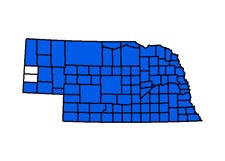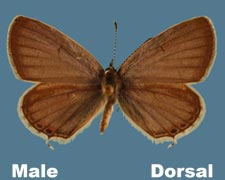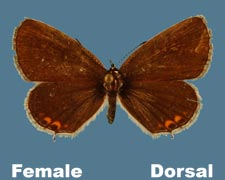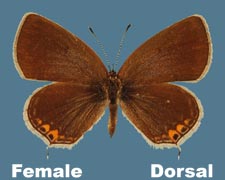
Eastern Tailed-Blue |
 |
| Cupido comyntas (Godart, [1824]) |
| Status: Common to abundant resident |
| Flight Period(s): Two to three flights. They have been found in the state from 7 May – 9 September. |
| Range: This blue is found in the eastern half of the United States and southern Canada west through the Dakotas, and south into eastern Texas. It is found thoughout Nebraska. |
| Larval Hostplant(s): Flowers and new growth of various legumes including Milkvetches (Astragalus species), Tickclovers (Desmodium species), Vetchlings (Lathyrus species), Lespidezas (Lespideza species), Trefoils (Lotus species), Lupines (Lupinus species), Black Medic (Medicago lupulina), Yellow Sweet Clover (Melilotus officinalis), White Clover (Trifolium repens) and Vetches (Vicia species) are utilized. |
| Overwinter: As full-grown caterpillar. |
| Commentary/Habitat: While other blues may occasionally be locally common, this blue is, on a widespread long-term basis, Nebraska’s most common blue. It is at home in urban areas as well as pasture/prairies, road ditches, alfalfa fields, riparian areas and wet meadows. It thrives in some disturbed areas colonized by legumes, and in pastures/praires it prefers somewhat open areas where low growing clovers (a hostplant) have gained a foothold. Adults visit flowers but can also be found at mud. The species is sexually dimorphic, with the females being dark gray/blue dorsally. |
| Similar Species: Western Tailed-Blue |



